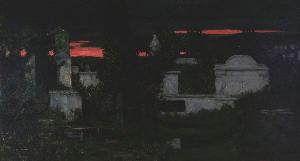Adam Hilary Bernard Chmielowski
Adam Hilary Bernard Chmielowski;Albert Chmielowski
Mjesto: Igołomia
Rođen: 1845
Smrt: 1916
Biografija:
Adam Hilary Bernard Chmielowski, also known as Albert Chmielowski, was a Polish Franciscan tertiary, painter, and disabled veteran of the Uprising of 1863. Born on August 20, 1845, in Igołomia, on the outskirts of Kraków Congress Poland, Chmielowski's life was marked by his unwavering devotion to art, faith, and the Polish people.
Early Life and Education
Chmielowski was born into a szlachta family, with his father, Wojciech Chmielowski, and mother, Józefa Borzysławska, being part of the Polish nobility. After receiving home schooling, Chmielowski went on to study agroforestry at the Puławy Polytechnic Institute, aiming to manage his late parents' estate.
Artistic Career
Chmielowski's artistic career began after he became involved in independence politics and joined the January Uprising. During a battle on October 1, 1863, Chmielowski suffered an injury that led to the amputation of his leg. Despite this, he continued to pursue his passion for art, discovering his talent for painting while studying in Ghent, Belgium. Chmielowski's artistic output includes 61 oils, 22 watercolours, and 15 drawings. Some of his notable works include Po pojedynku and Ecce homo, which is currently in the chapel of the Albertine Sisters in Kraków.
Notable Works and Legacy
Chmielowski's most celebrated work, Ecce homo, showcases his exceptional skill as a painter. This masterpiece, currently in the chapel of the Albertine Sisters in Kraków, is a testament to Chmielowski's unwavering devotion to his faith and art. Chmielowski's legacy extends beyond his artistic output, as he founded both the Albertine Brothers and Albertine Sisters, servants of the homeless and destitute. His selfless dedication to others is a reflection of his strong faith and commitment to his community.
- Adam Hilary Bernard Chmielowski's biography on Wikioo.org provides an in-depth look at his life and work.
- Visit the Kunstsammlungen Und Museen Augsburg to explore their collection of art and historical objects, including works by renowned artists such as Wilhelm Trübner and Jörg The Elder Breu.
- Discover the Ateneumin Taidemuseo, a treasure trove of Finnish art, featuring works by celebrated artists such as Akseli Gallen-Kallela and Pekka Halonen.
- Explore the Muzeum Kolekcji Im. Jana Paw-a ii, a museum in Warsaw, Poland, dedicated to the collection of artworks from various periods and styles.

